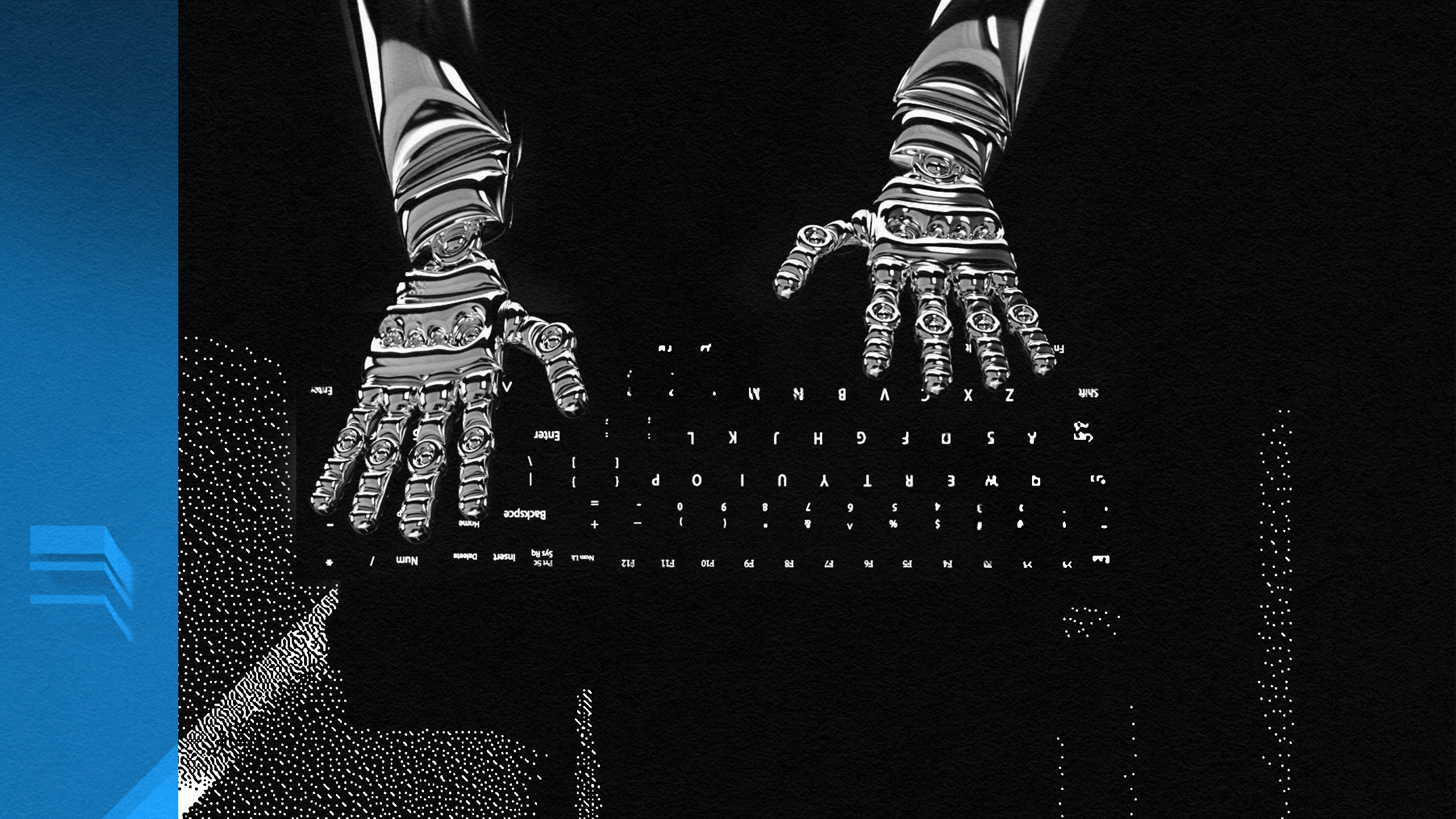How I adapted my company to AI: 5 key insights

Jotform
- AI takes time-saving to the next level, allowing us to focus on “the big stuff.”
- The quality and creative impact of meetings improves dramatically once transcription and note-taking have been automated by AI.
- Other areas where AI excels include better engagement for remote teams and enhanced cybersecurity.
A few years back, I read an article about cinemas in Korea going completely contact-free. Automated kiosks would sell tickets and movie-goers would buy popcorn through LED-controlled pick-up boxes. My childhood memories of cinema nights were filled with people—the smiley ticket vendors, the ushers in their old-school uniforms, the snack bar vendors who added extra butter to our hot popcorn. Contact-free cinemas seemed safer but at the same time, somewhat dystopian.
Today, when we talk about AI, there’s an undercurrent of anxiety about machines replacing people and, similar to the cinema example, eliminating the personal touch. To a certain extent, the advent of AI will introduce cost-saving mechanisms—sometimes, unfortunately, at the expense of human jobs. But the way I see it, AI can also be a growth accelerator. It can provide a means of improving the quality of service for customers and the quality of work for employees.

In my book, Automate Your Busywork, I highlight how important it is to take advantage of the latest tools and technology to save time so you can pursue more meaningful goals—as I call it, the “big stuff.” AI takes this goal to the next level.
At Jotform we’re always exploring new ways to leverage AI. When I launched the company in 2006, our mission was to automate a rote, everyday task—creating online forms. Since then, we’ve built an entire ecosystem to make our users’ lives easier. We now have an Online Store Builder to readily sell goods and services, Jotform Tables to process data, a Report Builder, an Enterprise service offering for teams and larger organizations, and even an eSign tool for digital contracts. AI gives us the ability to improve the speed of development, bolster our security, and enhance our customers’ experience.
Here are five ways we’ve adapted Jotform with AI while continuing to grow our team and scale our company.
Generate auto-replies with a personal touch
Jotform has always had autoreply emails. More recently, we incorporated AI-powered tools to provide tailored responses to recurring user questions and concerns submitted via our website forms. This, in turn, empowered our customer service team to focus on more things that only humans can do, like tackling complex tasks and addressing unique user issues. AI helps us to maintain a fast and reliable feedback channel with our most important stakeholders.
From a user perspective, there’s nothing more frustrating than reaching out to a service provider about a pressing issue and feeling as though you’re communicating with a robot. Before the era of AI, automated systems would use simple keyword matching based on the words in their inquiry and the words in the company documentation. When enough words matched, the user would be presented with articles that might help them resolve the issues—or might not. The result was oftentimes a poor customer experience.
AI can understand the nature of the person’s inquiry and fully understand the documentation and the organization. Using AI, you can ask it to not only read and review a form submission but also create a personalized response that addresses their specific question. The best example of this is with Google. Years ago Google only returned links with summaries and it was up to the searcher to click through and read them. Starting in October 2023, they began including AI-generated content at the top of the search results. In the same way as search with generative AI can prepare a personalized response for you, auto-replies can also.
Become fully present in meetings
At my company, I do my best to slash unnecessary meetings and status updates. Our global team works in various time zones and, on an individual level, according to their peak hours. If information can be shared on an asynchronous platform, we choose that over a meeting.
That said, some meetings are inevitable—and it’s no secret, they can be draining. Before AI, we’d all take careful notes during meetings. At the end of the week, those notes would start to look like a small novel—searching through them would be cumbersome and time-consuming. What’s worse, having to focus on note-taking would diminish our full attention on the actual meeting content.
Today, we integrate an AI tool, Otter.ai, into our videoconferences. It automatically turns our conversations into a neat, organized digital transcript. We no longer have to worry about scribbling away as colleagues speak. After meetings, locating specific parts is as easy as a Ctrl+F search.
Once we began using an AI tool for note-taking, I noticed a remarkable change in our meetings. Attendees were more engaged and contributed more, better ideas. People were able to listen more carefully and we eliminated time rehashing points already covered. Luckily, there are various tools, like Otter.ai, Gong.io, and Rev, to automate your note-taking and remove a tedious task from your plate. Then, you can focus on the more important stuff, like being fully present and making each meeting count.
Develop compelling content
AI can be a secret weapon for today’s content creators. My team and I create a lot of content daily. Some of it lives on our website. Some of my stories are published on entrepreneurial websites (like the one you’re reading!). While I trust that AI will never replace my voice, I can use it to strengthen my writing—by generating compelling headlines, for example. No one expects AI to write the next great novel, but it can be a smart way to generate usable first drafts. Then you can spend more time flexing your creative muscles.
For example, say you’re a writer for a SaaS company and tasked with producing lots of content. The volume alone keeps you from more meaningful work, like fully researching and verifying your articles. Deadlines are a perpetual source of dread. Instead of taking a crack at first drafts manually, you can use AI to create human-like text—tools like Copysmith, Jasper.ai, and OpenAI with GPT-3. Then, you can use the time saved to conduct more in-depth research and perform keyword analysis.
I know that for content creators, using AI may seem like a dirty word. But the key is not letting AI replace you—it’s essentially delegating the rote part of your job and giving you more mental space to improve the aspects that only you can do. And you can be sure: if you’re not taking advantage of AI tools, your competitors will be.
Deepen engagement
My company, like so many today, spans continents and time zones. While we mostly work in the office, we often collaborate with colleagues overseas. That means that we hardly see some of our closest collaborators IRL.
When teams that work together don’t see each other in person, it can be difficult to build and maintain those essential team bonds—and as any leader will tell you, the synergy between team members is all-important for continued innovation, motivation, and engagement.
That’s why we use a chatbot to regularly facilitate communication between team members and ensure that everyone is feeling connected. A chatbot for online platforms such as Slack and Discord can help run daily standup meetings, collect surveys, share responses, and post updates to team channels. It’s like planning a wedding yourself versus using a wedding planner (in this case, the planner is an AI-generated tool). Why suffer the headaches if you don’t have to?
There is no stand-in for face-to-face contact. But using bots to maintain a steady flow of effective communication helps teams stay connected and engaged.
Boost cybersecurity
Automated sales messages can be annoying. But at their worst, they also contain harmful links. These may trick you into giving out personal information to a bad actor, or entice you to click a link that will infect your computer with viruses.
Our cybersecurity team is constantly monitoring our network for those attempting to leverage it for nefarious purposes. AI gives us the power to monitor a wider range of signals and more quickly identify suspicious forms. It helps us identify a broader and more accurate array of imposters, such as those falsely representing a bank or trusted organization. Our internal systems can then respond faster and keep our platform safe and free for all to use. Then, our employees can focus on more meaningful work, like finding new solutions and developing innovative products—that, or simply have more time to truly disconnect and recharge.
AI isn’t the future—it’s right now. Businesses that leverage AI only stand to gain, in terms of satisfied employees and satisfied customers.
AI isn’t the future—it’s right now. Businesses that leverage AI only stand to gain, in terms of satisfied employees (whose time is no longer needlessly consumed by rote, manual tasks) and satisfied customers. In the end, it’s possible to be nostalgic for the old days, pre automated popcorn machines, and to jump on the AI bandwagon to enhance the work that only humans can do.





